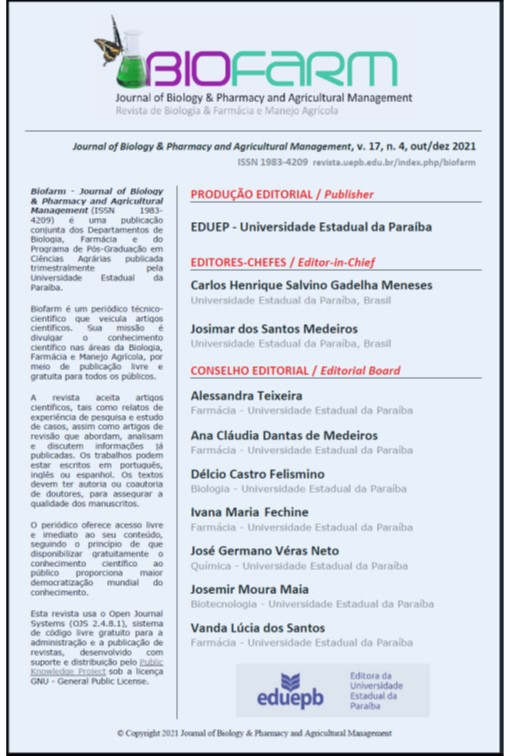HYDROGELS:
PRODUCTION, CLASSIFICATION, AND PHARMACEUTICAL APPLICATION
Resumo
Polymers are macromolecules made up of smaller units, the monomers, offering advantages for their different physical and chemical properties; being classified according to their nature in natural (biopolymers) and synthetic. Among the polymeric biomaterials are hydrogels, which are 3D polymeric networks with the ability to absorb a large volume of water. Characteristics such as flexibility, chemical and physical versatility, response to stimuli, and resilient structure are the main advantages of hydrogels, which are classified based on their origin, crosslinking, polymerization method, biodegradability, physical properties, and ionic charge. Hydrogels are used in various fields, yet most of the research is taking place in the field of biomedical applications because of their similarity to tissue, biocompatibility, and biodegradability. Based on this, this narrative type of literature review was conducted by searching articles indexed in the databases: PubMed, SciELO, Science direct, BVS, MedLine and Lilacs. As inclusion criteria, the articles should be between 2015 to 2020, freely available in the databases, with the following descriptors in the title and/or abstract: Hydrogels, Polymeric biomaterials, Obtaining, Classification and Pharmaceutical applications, those that did not have these criteria were excluded from the review. After the inclusion criteria 41 articles were used, aiming to detail the main characteristics and classifications of hydrogels that enable their use in various pharmaceutical applications. Based on the studies, the use of hydrogels in biomedical applications has been acquiring a key role, since due to their characteristics they have the ability to adapt to the needs of the desired application, although studies are still needed to improve them even more.
Downloads
Publicado
Como Citar
Edição
Seção
Licença
Copyright (c) 2023 BIOFARM - Journal of Biology & Pharmacy and Agricultural Management

Este trabalho está licenciado sob uma licença Creative Commons Attribution 4.0 International License.
Authors and co-authors retain copyright, but cede the right to first publication to the Journal of Biology & Pharmacy and Agricultural Management (BIOFARM).
Copyright encompasses exclusive rights to reproduce and deliver the article in all form and media, including reprints, photographs, microfilms and any other similar reproductions, as well as translations. The reproduction of any part of this journal, its storage in databases and its transmission by any form or media - such as electronic, electrostatic and mechanical copies, photocopies, recordings, magnetic media, etc. - will be allowed only with a written permission from the BIOFARM.
Articles published in BIOFARM will be Open-Access articles distributed under the terms and conditions of the Creative Commons Attribution License (CC BY). The copyright is retained by the author(s). BIOFARM will insert the following note at the end of the published text:
© 2023 by the authors; licensee BIOFARM, Campina Grande, Brazil. This article is an open access article distributed under the terms and conditions of the Creative Commons Attribution License (http://creativecommons.org/licenses/by/4.0/).


